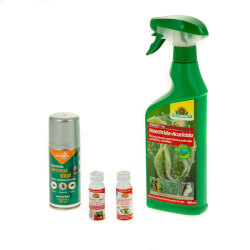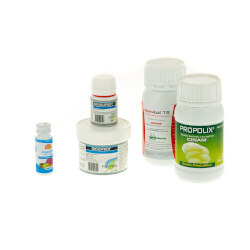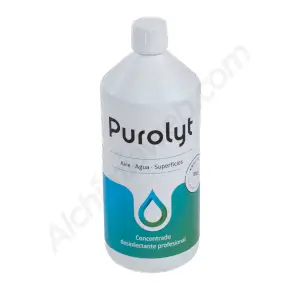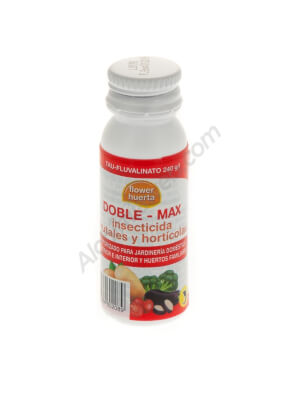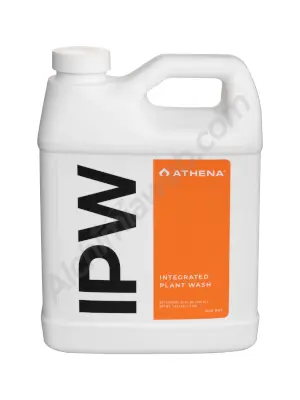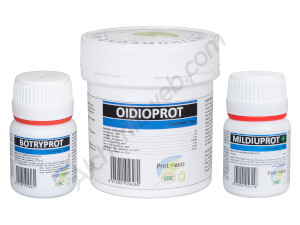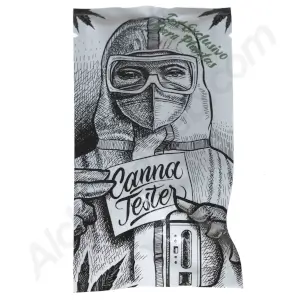What are phytosanitary products for pest control?
Phytosanitary products are substances used to protect plants from harmful organisms, such as pests, fungi, and diseases. In cannabis cultivation, whether indoors or outdoors, these products are essential to ensuring that plants grow healthy and reach harvest without suffering damage that could compromise their quality or yield.
Plant protection products include insecticides, fungicides, and even pesticides, and can be of natural (biological) or synthetic (chemical) origin . In a controlled growing environment, such as indoors or outdoors, their responsible use is essential to obtain a clean and safe harvest, and equally important, one free of harmful residues for the consumer.
However, this type of product doesn't end there. You can also opt for a very different approach: the use of natural predators of the main pests that attack cannabis. Indeed, biological control has established itself as an efficient method for preventing the appearance of various pests, as well as for combating them once they have established themselves.
Pest prevention and management in cannabis
Prevention is the first line of defense against pests and diseases in cannabis cultivation. Proper management involves constant observation and maintaining a clean, controlled environment, which significantly reduces the possibility of infestations. Preventative methods include the use of physical barriers, such as protective netting or sticky traps, or the introduction of beneficial insects that naturally control pests.
Preventative products based on essential oils, plant extracts, or biological compounds are also highly effective. Crop rotation, removal of plant debris, and humidity and temperature control are crucial practices for keeping plants healthy and preventing the spread of insects and fungi. Good preventative management reduces the need for more aggressive treatments, making it the preferred option. It's much easier to prevent a pest than to eradicate it !
Insecticidal products for cannabis cultivation
Insecticides are specifically designed to eliminate pests that affect cannabis plants, such as mites, aphids, thrips, and whiteflies. There are two main types of insecticides: chemical, which act quickly but can leave residue, and biological or natural, which are generally gentler and more environmentally friendly.
Among the most popular biological insecticides are those based on neem oil, a natural product that acts both as a preventative and curative agent, or potassium soap, which eliminates soft-bodied insects without harming plants. Insecticides should be applied carefully and according to the manufacturer's instructions, ensuring that the dosage is correct to avoid generating resistance in pests or negatively affecting plant development.
Additionally, as we've already mentioned, you can opt for biological pest control, which means releasing a series of insects onto your plants to protect them and keep away annoying and harmful pests like spider mites, thrips, and aphids. This is a great option if you're concerned about the use of pesticides in your environment; it's 100% organic and environmentally friendly.
Fungicide products for cannabis cultivation
Fungicides are used to combat fungi and molds that can seriously affect cannabis crops, especially in environments with high humidity or poor ventilation. Diseases such as powdery mildew (white mold), botrytis (gray mold), and fusarium wilt can appear at different stages of the growing cycle, from rooting to flowering.
There are preventative fungicides, which are applied before the disease appears, and curative fungicides, which act once the plant has already been infected. As with insecticides, it's important to select products that are safe for the end consumer, especially if the cannabis will be used medicinally. Biological fungicides, such as horsetail, cinnamon, or nettle meal, are excellent options for keeping your crop disease-free without compromising the quality of your flowers.
Safety and harvest deadlines
Adhering to the safety intervals indicated in the instructions is essential when using plant protection products. This period indicates the minimum time that must elapse between the last application of the product and the harvesting of the plants. This ensures that product residues are completely degraded and are not present in the buds during consumption. Failure to comply with these intervals can pose risks to the consumer's health, especially if the chemicals have not had time to decompose.
Therefore, it is crucial to read the instructions on plant protection products and ensure that the harvest is carried out at a time when the plant is completely free of hazardous residues. Furthermore, it is advisable to use certified products and, whenever possible, opt for natural or organic solutions to minimize risks.

